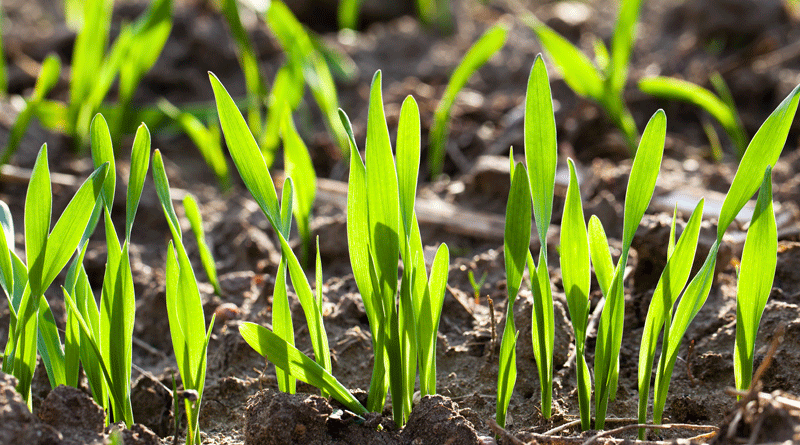Plant Breeders’ Rights
CANADA SIGNS ON TO UPOV’91
IMPORTANT AMENDMENTS TO Canada’s Plant Breeders’ Rights (PBR) Act have been passed into law. These changes bring Canada in line with other countries who have signed on to the 1991 Act of the Union for the Protection of New Plant Varieties (UPOV91) and unlock doors for the development of new and improved seed varieties within Canada and internationally.

Farmers will benefit from a wider seed selection, which means a boost in global competitiveness, says Crosby Devitt, vice-president of strategic development for Grain Farmers of Ontario. “For example, only four per cent of global wheat is presently grown in Canada, so there are a lot of genetics that could work or be tested here.”
For many years before the amendments were passed, companies already located in Canada were reluctant to invest in breeding new varieties of many crops such as cereals because of intellectual property concerns, explains Patty Townsend, CEO of the Canadian Seed Trade Association (CTSA).
In addition, international breeders were unwilling to send their superior varieties to Canada, even though they saw market potential. Now, all that has changed — but how soon can farmers realistically expect to see access to more varieties with a wider range of characteristics?
“We are looking to the Plant Breeders’ Rights Journal (PRBJ) that came out at the end of April for the first varieties protected under the new legislation,” Townsend says. The selections in the PBRJ include various cereal, oilseed, and potato varieties developed in Canada and other countries.
“We are hopeful that there will be some important new varieties available at that point for Canadian farmers, most likely internationally- developed varieties. It will take a little longer for us to see the impact of the changes on varieties developed in Canada. We are all pretty familiar with the length of time it takes to bring a new variety to market,” Townsend adds.
DELAYS AND CHALLENGES
Why did it take until 2015 for Canada to ratify UPOV91? The Government of Canada did introduce Bill C-80 in 1999, which contained appropriate amendments to the Plant Breeders’ Rights Act, but parliament was prorogued before the bill was passed.
“It seemed that there wasn’t the political will to try again until a number of things happened,” says Townsend.
These changes included the restructuring of government plant breeding and research objectives, with a greater emphasis on private sector breeding and variety development, particularly in cereals. Large breeding companies made it clear that they had no plans to invest in cereal breeding in Canada as it would not likely generate a return on investment.
Canada’s outdated plant variety protection laws became the subject of discussion during some bilateral and regional trade negotiations. The European Seed Association made it clear that European breeders would not send varieties to Canada because its laws were outdated. Some breeding companies made it known that they were unable to get access to improved varieties for Canada, and the specific reason was outdated plant variety protection.
OUTREACH AND EDUCATION
CSTA is undertaking an outreach and education campaign to make sure everyone understands the new landscape. “All varieties granted PBR protection after February 27, 2015, are protected under the new legislation, called PBR 91,” Townsend explains. “All varieties protected before February 27 will continue to be protected under the old legislation (PBR 78). So, for some time, farmers are going to be able to choose varieties that carry different protection. Since there are some substantial differences between PBR 78 and PBR 91, there is potential for confusion.”
She says, for example, that while the amendments entrench farmers’ privileges to clean, store, and use grain of PBR-protected varieties grown on their own farms for seed, they do not supersede any other intellectual property tools like patents and contracts.
“If farmers signed contracts or other agreements that included an agreement to not save seed, then they still cannot save seed, even if the variety is also protected by PBR,” Townsend says.
In addition, the amendments mean that additional stakeholders along the value chain now have obligations. “We want to make sure that farmers understand the changes, and that others like seed conditioners and grain buyers also understand their obligations and can prepare,” Townsend explains.
The CSTA has developed a website www.PBRfacts.ca as well as fact sheets with side-by-side comparisons of the two different types of protection. In addition, presentations are being created that can be used by CSTA value chain partners.
Townsend adds, “Canadian farmers have demonstrated time and time again that given the right tools they can be world leaders. Canada is the world’s largest producer and exporter of flax seed, canola, pulses, and durum wheat. The updated PBR legislation gives farmers access to a very important tool: new, more productive varieties to increase competitiveness. It’s an exciting time to be in Canadian agriculture.” •

















